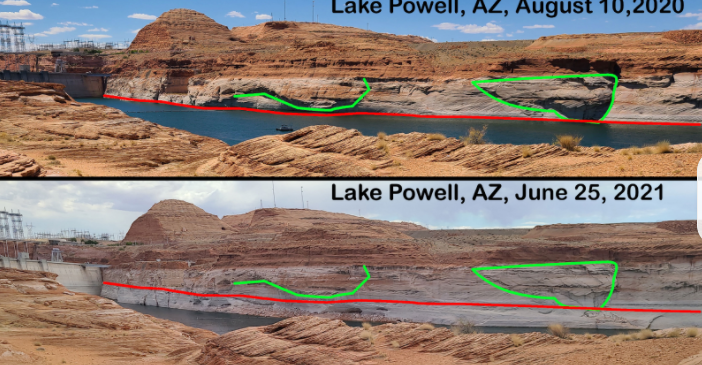Western United States is facing the worst drought in 1200 years
The western United States, especially California, is known for its frequent and prolonged droughts, a result of the area’s climate. However, in recent decades these droughts have become increasingly severe and the area is now viewed as being in a constant “megadrought,” a term used for droughts that last two decades or longer. A recent study published in Nature Climate Change found that the megadrought of the last 22 years is the worst the area has seen in at least 1200 years.
The study found that human activity has made the megadrought more than 70% worse over the past few decades. As a part of this 70%, the increase in temperature caused by human-released greenhouse gases has worsened the drought by 42%.
“The results are really concerning, because it’s showing that the drought conditions we are facing now are substantially worse because of climate change,” said Park Williams, the lead author of the study and a climate scientist at UCLA.
The last drought that was comparable to this one, though it was significantly less extreme, occurred in the 1500s. Scientists gathered this information by studying tree rings in the area. An analysis of the rings, from both dead and alive trees, gave scientists insight into the climate dating back to 800 CE.
In spite of unusually high rain- and snowfall in the Sierra Nevada mountains this year, the drought’s significant effects can be seen across the region, as lakes and reservoirs are reaching historically low water levels. One impact, which is garnering mixed reactions from residents of the area, is the slow disappearance of Lake Powell, a man-made lake in Arizona.
Lake Powell was created in 1964 when construction was completed on the Glen Canyon Dam along the Colorado River. The dam stopped the flow of water through Glen Canyon, flooding the region. Many environmental activists were outraged at the destruction of the area’s natural habitat, a unique ecosystem with striking geologic formations that drew thousands of visitors each year. The creation of the lake led these activists to found the Glen Canyon Institute, which advocates for the dam to be reconstructed to allow the Colorado River to flow through the region.
As a consequence of the current drought, Lake Powell’s water line has receded significantly, revealing more than three stories of redstone rock structures that the lake once buried. Members of the Glen Canyon Institute see this as a success, arguing that the lake’s disappearance is allowing “America’s lost national park” to be rediscovered.
In spite of this positive outcome, the megadrought continues to limit people’s access to water and farmers’ ability to grow crops. With the study projecting that the drought will persist for years to come, it is clear that the only solution is to completely rethink how we use our water.





